The US Army regularly produces deadly viruses, bacteria and toxins in direct violation of the UN Convention on the prohibition of Biological Weapons. Hundreds of thousands of unwitting people are systematically exposed to dangerous pathogens and other incurable diseases. Bio warfare scientists using diplomatic cover test man-made viruses at Pentagon bio laboratories in 25 countries across the world. These US bio-laboratories are funded by the Defense Threat Reduction Agency (DTRA) under a $ 2.1 billion military program – Cooperative Biological Engagement Program (CBEP) – and are located in former Soviet Union countries such as Georgia and Ukraine, the Middle East, South East Asia and Africa.
Georgia is a Testing Ground For Bioweapons
The Lugar Center is the Pentagon bio laboratory in Georgia. It is located just 17 km away from the US Vaziani military airbase in the capital Tbilisi. Tasked with the military program are biologists from the US Army Medical Research Unit-Georgia (USAMRU-G) along with private contractors. The Bio-safety Level 3 Laboratory is accessible only to US citizens with security clearance. They are accorded diplomatic immunity under the 2002 US-Georgia Agreement on defense cooperation.
The USA-Georgia agreement accords diplomatic status to the US military and civilian personnel (including diplomatic vehicles), working on the Pentagon program in Georgia.
Information obtained from the US federal contracts registry clarifies some of the military activities at the Lugar Center – among them research on bio-agents (anthrax, tularemia) and viral diseases (e.g. Crimean-Congo Hemorrhagic Fever), and the collection of biological samples for future experiments.
Pentagon Contractors Produce Bio Agents Under Diplomatic Cover
The Defense Threat Reduction Agency (DTRA) has outsourced much of the work under the military program to private companies, which are not held accountable to Congress, and which can operate more freely and move around the rule of law. US civilian personnel performing work at the Lugar Center have also been given diplomatic immunity, although they are not diplomats. Hence, private companies can perform work, under diplomatic cover, for the US government without being under the direct control of the host state – in this case the Republic of Georgia. This practice is often used by the CIA to provide cover for its agents.
Three private American companies work at the US bio-laboratory in Tbilisi – CH2M Hill, Battelle and Metabiota. In addition to the Pentagon, these private contractors perform biological research for the CIA and various other government agencies.
CH2M Hill has been awarded $341.5 million DTRA contracts under the Pentagon’s program for bio-laboratories in Georgia, Uganda, Tanzania, Iraq, Afghanistan, South East Asia. Half of this sum ($161.1 million) is allocated to the Lugar Center under the Georgian contract.
According to CH2M Hill, the US Company has secured biological agents and employed former bio-warfare scientists at the Lugar Center. These are scientists who are working for another American company involved in the military program in Georgia – Battelle Memorial Institute.
As a $59 million subcontractor at the Lugar Center, Battelle has extensive experience in research on bio-agents, as the company has already worked on the US Bio-weapons Program under 11 previous contracts with the US Army (1952-1966).
Source: US Army Activities in the US, Biological Warfare Programs, vol. II, 1977, p. 82
The private company performs work for the Pentagon’s DTRA bio laboratories in Afghanistan, Armenia, Georgia, Uganda, Tanzania, Iraq, Afghanistan and Vietnam. Battelle conducts research, development, testing, and evaluation using both highly toxic chemicals and highly pathogenic biological agents for a wide range of US government agencies. It has been awarded some $2 billion federal contracts in total, and ranks 23 on the Top 100 US government contractors list.
The CIA-Battelle Project Clear Vision
Project Clear Vision (1997 and 2000), a joint investigation by the CIA and the Battelle Memorial Institute, under a contract awarded by the Agency, reconstructed and tested a Soviet-era anthrax bomblet in order to test its dissemination characteristics. The project’s stated goal was to assess bio-agents dissemination characteristics of bomblets. The clandestine CIA-Battelle operation was omitted from the US Biological Weapons Convention declarations submitted to the UN.
Top Secret Experiments
Battelle has operated a Top Secret Bio laboratory (National Biodefense Analysis and Countermeasures Center – NBACC) at Fort Detrick, Maryland, under a US Department of Homeland Security (DHS) contract for the last decade. The company has been awarded a $344.4 million federal contract (2006 – 2016) and another $17.3 million contract (2015 -2026) by DHS.
Among the secret experiments performed by Battelle at NBACC, are: Assessment of powder dissemination technology, Assessment of hazard posed by aerosolized toxins, and Assessment of virulence of B. Pseudomallei (Meliodosis) as a function of aerosol particle in non-human primates. Melioidosis has the potential to be developed as a biological weapon, hence it is classed as a category B. Bioterrorism Agent. B. Pseudomallei was studied by the US as a potential bioweapon in the past.
Besides the military experiments at the Lugar Center in Georgia, Battelle has already produced bioterrorism agents at the Biosafety Level 4 NBACC Top Secret Laboratory at Fort Detrick in the US. An NBACC presentation lists 16 research priorities for the lab, including to characterize classical, emerging and genetically-engineered pathogens for their BTA (biological threat agent) potential; assess the nature of nontraditional, novel and non-endemic induction of disease from potential BTA; and to expand aerosol-challenge testing capacity for non-human primates.
Pentagon Biolabs at The epicenter of The Ebola Crisis
The US Company Metabiota Inc. has been awarded $18.4 million federal contracts under the Pentagon’s DTRA program in Georgia and Ukraine for scientific and technical consulting services.
Metabiota services include global field-based biological threat research, pathogen discovery, outbreak response and clinical trials.
Metabiota Inc. had been contracted by the Pentagon to perform work for DTRA before and during the Ebola crisis in West Africa, and was awarded $3.1 million (2012-2015) for work in Sierra Leone – one of the countries at the epicenter of the Ebola outbreak.
Metabiota worked on the Pentagon’s project at the epicenter of the Ebola crisis, where three US biolabs are situated.
A July 17, 2014 report, drafted by the Viral Hemorrhagic Fever Consortium, accused Metabiota Inc. of failing to abide by an existing agreement on how to report test results and for bypassing the Sierra Leonean scientists working there. The report also raised the possibility that Metabiota was culturing blood cells at the lab, something the report said was dangerous, as well as misdiagnosing healthy patients. All of those allegations were denied by Metabiota.
Military Experiments on Biting Insects
Entomological warfare is a type of biological warfare that uses insects to transmit diseases. The Pentagon has allegedly performed such entomological tests in Georgia and Russia.
Biting Flies in Georgia
In 2014 The Lugar Center was equipped with an insect facility and launched a project titled ‘Raising Awareness about Barcoding of Sand Flies in Georgia and Caucasus’. The project covered a larger geographic area outside of Georgia – the Caucasus region. In 2014-2015 Phlebotomine sand fly species were collected under another project, ‘Surveillance Work on Acute Febrile Illness’ and all (female) sand flies were tested to determine their infectivity rate. A third project, also including sand flies collection, studied the characteristics of their salivary glands.
As a result, Tbilisi has been infested with biting flies since 2015. These biting insects live indoors, in bathrooms, all year long, which was not the typical behavior of these species in Georgia previously (normally the Phlebotomine fly season in Georgia is exceptionally short – from June to September). Local people complain of being bitten by these newly-appeared flies while naked in their bathrooms. They also have a strong resistance to cold and can survive even in sub-zero temperatures in the mountains.
Biting Flies in Dagestan, Russia
Since the start of the Pentagon project in 2014, flies similar to those in Georgia have appeared in neighboring Dagestan (Russia). According to local people, they bite and cause rashes. Their breeding habitats are house drains.
Flies from the Phlebotomine family carry dangerous parasites in their saliva which they transmit through a bite to humans. The disease, which these flies carry, is of high interest to the Pentagon. In 2003 during the US invasion of Iraq, American soldiers were severely bitten by sand flies and contracted Leishmoniasis. The disease is native to Iraq and Afghanistan, and if left untreated the acute form of Leishmoniasis can be fatal.
A 1967 US Army report ‘Arthropods of medical importance in Asia and the European USSR‘ lists all local insects, their distribution and the diseases that they carry. Biting flies, which live in drains, are also listed in the document. Their natural habitat, though, is the Philippines, not Georgia or Russia.
Operation Whitecoat: Infected Flies Tested to Bite HumansIn 1970 and 1972, Sand Fly Fever tests were performed on humans according to a declassified US Army report – ‘US Army Activities in the US, Biological Warfare Programs, 1977, vol. II, p. 203‘. During Operation Whitecoat, volunteers were exposed to bites by infected sand flies. Operation Whitecoat was a bio-defense medical research program carried out by the US Army at Fort Detrick, Maryland, between 1954 and 1973.
Despite the official termination of the US bio-weapons program, in 1982 USAMRIID performed an experiment to see if sand flies and mosquitoes could be vectors of Rift Valley Virus, Dengue, Chikungunya and Eastern Equine Encephalitis – viruses which the US Army researched for their potential as bio-weapons.
Killer Insects
The Pentagon has a long history in using insects as vectors for diseases. According to a partially declassified 1981 US Army report, American bio warfare scientists carried out a number of experiments on insects. These operations were part of US Entomological Warfare under the Program for Biological Weapons of the US.
The Pentagon: How to Kill 625,000 People For Just $0.29 Cost Per Death
A US Army report in 1981 compared two scenarios – 16 simultaneous attacks on a city by A. Aegypti mosquitoes, infected with Yellow Fever, and Tularemia aerosol attack, and assessed their effectiveness in terms of cost and casualties.
Operation Big Itch: Field tests were performed to determine coverage patterns and survivability of the tropical rat flea Xenopsylla cheopis for use as a disease vector in biological warfare.
Operation Big Buzz: 1 million A. Aegypti mosquitoes were produced, 1/3 were placed in munitions and dropped from aircraft, or dispersed on the ground. The mosquitoes survived the airdrop and actively sought out human blood.
Operation May Day: Aedes Aegypti mosquitoes were dispersed through ground-based methods in Georgia, USA, during a US Army operation codenamed May Day.
Parts of the 1981 US Army report such as the “Mass production of Aedes Aegypti” have not been declassified, potentially meaning that the project is still ongoing.
Aedes Aegypti, also known as yellow fever mosquito, have been widely used in US military operations. The same species of mosquitoes are alleged to be the vectors of dengue, chikungunya and the Zika virus, which causes genetic malformations in newborns
Operation Bellweather: The US Army Chemical Research and Development Command, Biological Weapons Branch, studied outdoor mosquito biting activity in a number of field tests at Dugway Proving Ground, Utah, in 1960. Virgin female Aedes aegypti mosquitoes, which had been starved, were tested upon troops out in the open air.
For reference: OutdoorMosquito Biting Activity Studies,Project Bellweather I, 1960, Technical Report, US Army, Dugway Proving Ground
Military Experiments With Tropical Mosquitoes and Ticks in Georgia
Such species of mosquitoes and fleas (studied in the past under the US Entomological Warfare Program) have also been collected in Georgia and tested at the Lugar Center.
Under the DTRA project ‘Virus and Other Arboviruses in Georgia’ in 2014, the never-before-seen tropical mosquito Aedes albopictus was detected for the first time and after an absence of decades (60 years), the existence of Aedes Aegypti mosquito was confirmed in west Georgia.
These tropical mosquitoes Aedes Albopictus, having never been seen before in Georgia, have also been detected in neighboring Russia (Krasnodar) and Turkey. According to data provided by the European Centre for Disease Prevention and Control, their spread is unusual for this part of the world.
Aedes Aegypti mosquitoes have been distributed only in Georgia, southern Russia and northern Turkey. They were detected for the first time in 2014 after the start of the Pentagon program at the Lugar Center.
Under another DTRA project, ‘Epidemiology and Ecology of Tularemia in Georgia‘ (2013-2016), 6,148 ground ticks were collected; 5,871 were collected off cattle and 1,310 fleas and 731 ticks were caught. In 2016 a further 21,590 ticks were collected and studied at the Lugar Center.
Anthrax Outbreak in Georgia and NATO Human Trials
In 2007 Georgia ended its policy of having compulsory annual livestock anthrax vaccination. As a result, the morbidity rate of the disease reached its peak in 2013. The same year NATO started human-based anthrax vaccine tests at the Lugar Center in Georgia.
In 2007, despite the anthrax outbreak, the Georgian government terminated compulsory vaccination for 7 years. 2013 saw NATO begin human trials on a new anthrax vaccine in Georgia.
Pentagon Research on Russian Anthrax
Anthrax is one of the bio agents weaponized by the US Army in the past. Despite the Pentagon’s claims that its program is only defensive, there are facts to the contrary. In 2016 at the Lugar Center American scientists carried out research on the ‘Genome Sequence of the Soviet/Russian Bacillus anthracis Vaccine Strain 55-VNIIVViM’, which was funded by the US Defense Threat Reduction Agency’s (DTRA) Cooperative Biological Engagement Program in Tbilisi, and administered by Metabiota (the US contractor under the Pentagon program in Georgia).
In 2017 the DTRA funded further research – ‘Ten Genome Sequences of Human and Livestock Isolates of Bacillus anthracis from the Country of Georgia‘ – which was performed by USAMRU-G at the Lugar Center.
34 People Intentionally-Infected With Crimean-Congo Hemorrhagic Fever (CCHF) in Georgia
Crimean-Congo hemorrhagic fever (CCHF) is caused by infection through a tick-borne virus (Nairovirus). The disease was first characterized in Crimea in 1944 and given the name Crimean hemorrhagic fever. It was then later recognized in 1969 as the cause of illness in Congo, thus resulting in the current name of the disease. In 2014 34 people became infected (including a 4-year old child) with CCHF. Three of them died. The same year, Pentagon biologists studied the virus in Georgia under the DTRA project ‘Epidemiology of febrile illnesses caused by Dengue viruses and other Arboviruses in Georgia‘. The project included tests on patients with fever symptoms and the collection of ticks, as possible vectors of CCHFV for laboratory analysis.
The cause of the CCHF outbreak in Georgia is still unknown. According to the local Veterinary Department report, only one tick from all of the collected species from the infected villages tested positive for the disease. Despite the claims of local authorities that the virus was transmitted to humans from animals, all animal blood samples were negative too. The lack of infected ticks and animals is inexplicable given the sharp increase of CCHF human cases in 2014, meaning that the outbreak was not natural and the virus was spread intentionally.
In 2016 another 21,590 ticks were collected for DNA databases for future studies at the Lugar Center under the Pentagon project ‘Assessing the Seroprevalence and Genetic Diversity of Crimean-Congo Hemorrhagic Fever Virus (CCHFV) and Hantaviruses in Georgia‘.
Military Bio-lab Blamed For Deadly CCHF Outbreak in Afghanistan
237 cases of Crimean-Congo Hemorrhagic Fever (CCHF) have also been reported across Afghanistan, 41 of which were fatal as of December 2017. According to Afghanistan’s Ministry of Health, most of the cases have been registered in the capital Kabul, where 71 cases have been reported with 13 fatalities, and in the province of Herat near the border with Iran (67 cases).
Afghanistan is one of 25 countries across the world with Pentagon bio-laboratories on their territory. The project in Afghanistan is part of the US bio-defense program – Cooperative Biological Engagement Program (CBEP), which is funded by the Defense Threat Reduction Agency (DTRA). The DTRA contractors, working at the Lugar Center in Georgia, CH2M Hill and Battelle, have also been contracted for the program in Afghanistan. CH2M Hill has been awarded a $10.4 million contract (2013-2017). The Pentagon contractors in Afghanistan and Georgia are the same, and so are the diseases which are spreading among the local population in both countries.
Why The Pentagon Collects And Studies Bats
Bats are allegedly the reservoir hosts to the Ebola Virus, Middle East Respiratory Syndrome (MERS), and other deadly diseases. However, the precise ways these viruses are transmitted to humans are currently unknown. Numerous studies have been performed under the DTRA Cooperative Biological Engagement Program (CBEP) in a search for deadly pathogens of military importance in bats.
221 bats were euthanized at the Lugar Center for research purposes in 2014.
Bats have been blamed for the deadly Ebola outbreak in Africa (2014-2016). However, no conclusive evidence of exactly how the virus ‘jumped’ to humans has ever been provided, which raises suspicions of intentional and not natural infection.
Engineering Deadly Viruses is Legal in the US
Middle East respiratory syndrome coronavirus (MERS-CoV) first appeared in 2012 and is thought to have originated in bats and spread directly to humans and/or camels. However, like Ebola, the precise ways the virus spreads are unknown.
1,980 cases with 699 deaths caused by MERS-CoV were reported in 15 countries across the world (as of June 2017).
MERS-CoV is one of the viruses that have been engineered by the US and studied by the Pentagon, as well as influenza and SARS. Confirmation of this practice is Obama’s 2014 temporary ban on government funding for such ‘dual-use’ research. The moratorium was lifted in 2017 and experiments have continued. Enhanced Potential Pandemic Pathogens (PPPs) experiments are legal in the US.
Such experiments aim to increase the transmissibility and/or virulence of pathogens.
Tularemia as Bioweapon
Tularemia, also known as Rabbit Fever, is classified as a bioterrorism agent and was developed as such in the past by the US. However, the Pentagon’s research on tularemia continues, as well as on possible vectors of the bacteria such as ticks and rodents, which cause the disease. The DTRA has launched a number of projects on Tularemia along with other especially dangerous pathogens in Georgia.
Especially Dangerous Pathogens (EDPs), or select agents, represent a major concern for public health globally. These highly pathogenic agents have the potential to be weaponized, with proof of their military importance seen through the following Pentagon projects: Epidemiology and Ecology of Tularemia in Georgia (2013-2016) (60,000 vectors were collected for strain isolates and genome research); Epidemiology of Human Tularemia in Georgia; and Human Disease Epidemiology and Surveillance of Especially Dangerous Pathogens in Georgia (study of select agents among patients with undifferentiated fever and hemorrhagic fever/septic shock).
Source: 1981 US Army Report
Pentagon Bio-laboratories Spread Diseases in Ukraine
The DoD Defense Threat Reduction Agency (DTRA) has funded 11 bio-laboratories in Ukraine, which also borders on Russia:
The US Military Program is Sensitive Information
Ukraine has no control over the military bio-laboratories on its own territory. According to the 2005 Agreement between the US Department of Defense and the Ministry of Health of Ukraine, the Ukrainian government is prohibited from public disclosure of sensitive information about the US program and Ukraine is obliged to transfer to the US DoD dangerous pathogens for biological research. The Pentagon has been granted access to certain state secrets of Ukraine in connection with the projects under their agreement:
Biowarfare Scientists Under Diplomatic Cover
Among the set of bilateral agreements between the US and Ukraine is the establishment of the Science and Technology Center in Ukraine (STCU) – an international organization funded mainly by the US government which has been accorded diplomatic status. The STCU officially supports projects of scientists previously involved in the Soviet biological weapons program. Over the past 20 years the STCU has invested over $285 million in funding and managing some 1,850 projects of scientists who previously worked on the development of weapons of mass destruction.
The US personnel in Ukraine work under diplomatic cover.
364 Ukrainians Died From Swine Flu
One of the Pentagon laboratories is located in Kharkiv, where in January 2016 at least 20 Ukrainian soldiers died from a flu-like virus in just two days, with 200 more being hospitalized. The Ukrainian government did not report on the dead Ukrainian soldiers in Kharkiv. As of March 2016, 364 deaths were reported across Ukraine (81.3 % caused by Swine Flu A (H1N1) pdm09 – the same strain which caused the world pandemic in 2009).
According to Donetsk People’s Republic (DPR) intelligence information, the US bio-lab in Kharkiv leaked the deadly virus.
Police Investigate Infection With Incurable Disease
Late last year, a highly suspicious Hepatitis A infection spread rapidly in just few months across South East Ukraine, where most of the Pentagon biolabs are located.
37 people have been hospitalized for Hepatitis A in the Ukrainian city of Mykolaiv as of January 2018. Local police have launched an investigation into “infection with human immunodeficiency virus and other incurable diseases.” Three years ago more than 100 people in the same city became infected with Cholera. Both diseases are alleged to have spread through contaminated drinking water.
In the summer of 2017, 60 people with Hepatitis A were admitted to hospital in the city of Zaporizhia. The cause of this outbreak is still unknown.
In the Odessa region, 19 children from an orphanage were hospitalized for hepatitis A in June 2017.
29 cases of Hepatitis A were reported in Kharkiv in November 2017. The virus was isolated in contaminated drinking water. One of the Pentagon bio-labs located in Kharkiv was blamed for the deadly Flu outbreak a year ago that claimed the lives of 364 Ukrainians.
Ukraine And Russia Hit By New Highly Virulent Cholera Infection
In 2011 Ukraine was hit by a cholera outbreak. 33 patients were reportedly hospitalized for severe diarrhea. A second outbreak struck the country in 2014 when more than 800 people all across Ukraine were reported to have contracted the disease. In 2015 at least 100 new cases were registered in the city of Mykolaiv alone.
A new highly virulent variant of the cholera agent Vibrio cholera, with a high genetic similarity to the strains reported in Ukraine, hit Moscow in 2014. According to a 2014 Russian Research Anti-Plaque Institute genetic study, the cholera strain isolated in Moscow was similar to the bacteria which caused the epidemic in neighboring Ukraine.
Southern Research Institute, one of the US contractors working at the bio-laboratories in Ukraine, has projects on Cholera, as well as on Influenza and Zika – all pathogens of military importance to the Pentagon.
Along with Southern Research Institute, two other private American companies operate military bio-labs in Ukraine – Black & Veatch and Metabiota.
Black & Veatch Special Project Corp. was awarded $198.7 million in DTRA contracts to build and operate bio-laboratories in Ukraine (under two 5-year contracts in 2008 and 2012 totaling $128.5 million), as well as in Germany, Azerbaijan, Cameroon, Thailand, Ethiopia, Vietnam and Armenia.
Metabiota has been awarded a $18.4 million federal contract under the program in Georgia and Ukraine. This US company was also contracted to perform work for the DTRA before and during the Ebola crisis in West Africa, including $3.1 million (2012-2015) for work in Sierra Leone.
Southern Research Institute has been a prime subcontractor under the DTRA program in Ukraine since 2008. The company was also a prime Pentagon contractor in the past, under the US Biological Weapons Program for research and development of bio-agents, with 16 contracts between 1951 and 1962.
Source: US Army Activities in the US, Biological Warfare Programs, vol. II, 1977, p. 82
Soviet Defector Produced Anthrax For The Pentagon
Southern Research Institute was also a subcontractor on a Pentagon program for anthrax research in 2001. The prime contractor being Advanced Biosystems, whose president at that time was Ken Alibek (a former Soviet microbiologist and biological warfare expert from Kazakhstan who defected to the US in 1992).
Ken Alibek was the First Deputy Director of Biopreparat, where he oversaw a program for biological weapon facilities and was the Soviet Union’s main expert on anthrax. After his defection to the US, he was engaged on Pentagon research projects.
$250,000 For Lobbying Jeff Sessions For “Research For US Intelligence”
Southern Research Institute lobbied the US Congress and US Department of State hard for “issues related to research and development for US intelligence” and “defense related research and development.” The lobbying activities coincided with the start of the Pentagon projects on bio-labs in Ukraine and other former Soviet states.
The company paid $250,000 for lobbying then-Senator Jeff Sessions in 2008-2009 (currently the US Attorney General appointed by Donald Trump), when the institute was awarded a number of federal contracts.
For a 10-year period (2006-2016) Southern Research Institute paid $1.28 million for lobbying the US Senate, House of Representatives, the State Department and the Department of Defense (DoD). Senator Jeff Sessions’ aide on Capitol Hill, Watson Donald, is now a Senior Director at Southern Research Institute.
Police Investigate Botulism Toxin Poisoning in Ukraine
115 Botulism cases, with 12 deaths, were reported in Ukraine in 2016.
In 2017 the Ukrainian Ministry of Health confirmed a further 90 new cases, with 8 deaths, of botulinum toxin poisoning (one of the most poisonous biological substances known). According to local health authorities, the cause of the outbreak was food poisoning, into which police launched an investigation.
The Ukrainian government stopped supplying antitoxin in 2014 and no botulism vaccines in stock were available during the 2016-2017 outbreak.
Botulism is a rare and extremely dangerous illness caused by a toxin produced by the bacterium Clostridium botulinum.
1 gm of The Toxin Can Kill as Many as 1 Million People
Botulinum neurotoxin poses a major bio-weapon threat because of its extreme potency, ease of production and transport. It causes muscles paralyses, respiratory failure and ultimately death if not treated immediately. A single gram of crystalline toxin, evenly dispersed and inhaled can kill more than one million people. It could be disseminated via aerosol, or by contamination of water and/ or food supplies.
The Pentagon Produces Live Viruses, Bacteria & Toxins
Botulinum Toxin was tested as a bio-weapon by the US Army in the past, as well as Anthrax, Brucella and Tularemia. Although the US bio-weapons program was officially terminated in 1969, documents show that the military experiments never ended. Presently the Pentagon produces and tests live bio-agents at the same military facility as it did in the past – Dugway Proving Ground.
Current Field Tests
Capabilities Report 2012, West Desert Test Center
Past Field Tests
Source: 1977 US Army Report, p. 135
Bioweapons Factory in The US
The US Army produces and tests bio-agents at a special military facility located at Dugway Proving Ground (West Desert Test Center, Utah), as proven in a 2012 US Army Report. The facility is overseen by the Army Test and Evaluation Command.
The Life Sciences Division (LSD) at Dugway Proving Ground is tasked with the production of bio-agents. According to the Army report, scientists from this division produce and test aerosolized bio-agents at Lothar Saloman Life Sciences Test Facility (LSTF).
Source: Capabilities Report 2012, West Desert Test Center
The Life Sciences Division consists of an Aerosol Technology branch and a Microbiology Branch. The Aerosol Technology Branch aerosolizes biological agents and simulants. The Microbiology branch produces toxins, bacteria, viruses and agent-like organisms which are used in chamber and field testing.
After the bio-agents are produced, the scientists challenge them at containment aerosol chambers.
Aerosol Experiments With Botulinum Neurotoxin And Anthrax
Documents prove that the US Army produces, possesses and tests aerosols of the most lethal toxin in the world – Botulinum Neurotoxin. In 2014 the Department of the Army purchased 100 mg of Botulinum Toxin from Metabiologics for tests at Dugway Proving Ground.
The experiments date back to 2007 when an unspecified quantity of the toxin was procured for the Department of the Army by the same company – Metabiologics. According to the 2012 West Desert Test Center Report, the military facility performs tests with Botulinum Neurotoxin Aerosol, as well as with aerosolized Anthrax, Yersinia pestis, and Venezuelan Equine Encephalitis Virus (VEE).
Source: Capabilities Report 2012, West Desert Test Center
Outdoor Field Test Programs at Dugway Proving Ground
US Army documents and photos show that the Pentagon has developed various dissemination methods for bioterrorism attacks, including via explosives.
Source: Capabilities Report 2012, West Desert Test Center
The US Army report lists numerous dissemination techniques, including via bio-aerosol sprayers. Such sprayers, called Micronair disseminators, have already been developed by the US Army and tested at Dugway Proving Ground. According to the documents, they can be vehicle-mounted, or worn as a backpack with a pump system, which can be fitted to the unit to increase the accuracy of the release. Micronair sprayers can release 50 to 500 mL of bio-liquid simulant per minute from 12 L tanks.
The US Stole Bacteria From Saddam Hussein’s Bio Weapons Factory
Bacillus thuringiensis is an insect pathogen that is widely used as a bio-pesticide. B. thuringiensis (BT) Al Hakam was collected in Iraq by the UN Special Commission led by the US in 2003. It is named after Al Hakam – Iraq’s bio-weapons production facility. Apart from Pentagon field tests, this bacterium is also used in the US for the production of GM corn, which is resistant to pests. Photos posted by the CIA prove that the bacteria was collected by the US in Iraq. According to the CIA, the vials containing bio-pesticide were recovered from an Al Hakam scientist’s home.
CIA: A total of 97 vials – including those with labels consistent with the Al Hakam cover stories of single-cell protein and bio-pesticides – as well as strains that could be used to produce BW agents, were recovered from a scientist’s residence in Iraq in 2003.
Information from the US federal contracts registry shows that the Pentagon performs tests using the bacteria stolen from Saddam Hussein’s bio-weapons factory in Iraq.
The tests are performed on Kirtland Air Force Base (Kirtland is the home of the Air Force Materiel Command’s Nuclear Weapons Center). Here weapons are being tested, meaning that the field tests with biological simulants (bacteria) also fall into this group.
The DTRA contractor on this project – Lovelace Biomedical and Environmental Research Institute (LBERI) – operates an Animal Bio-safety 3 Level (ABSL-3) laboratory, which has Select Agent status. The facility is designed to conduct bioaerosol studies. The company has been awarded a 5-year contract for field tests with biological simulants at Kirtland Air Force Base.
Field Tests With Biological Simulants (Bacteria)
What the Pentagon is currently doing is exactly what it did in the past, meaning that its bio-weapons program was never terminated. The US Army performed 27 field tests with such biological simulants, involving the public domain from 1949 to 1968, when President Nixon officially announced the end of the program.
Source: US Army Activities in the US, Biological Warfare Programs, vol. II, 1977, p. 125-126
Field Tests in Chechnya
The Defense Threat Reduction Agency (DTRA), which runs the US military program at the Lugar Center in Georgia, is alleged to have already performed field tests with an unknown substance in Chechnya, Russia. In the spring of 2017 local citizens reported a drone disseminating white powder close to the Russian border with Georgia. Neither the Georgian border police, nor the US personnel operating on the Georgia-Russia border, commented on this information.
$9.2 Million US Military Project on Russia-Georgia Border
DTRA has full access to the Russia-Georgia border, granted under a military program called ‘Georgia Land Border Security Project‘. The activities related to the project have been outsourced to a private American company – Parsons Government Services International. DTRA has previously contracted Parsons for similar border security projects in Lebanon, Jordan, Libya and Syria. Parsons have been awarded a $9.2 million contract under the Pentagon border security project on the Russia-Georgia border.
US Defense Agency Tests GM Insects to Transmit GM Viruses
The Pentagon has invested at least $65 million in gene editing. The US Defense Advanced Research Projects Agency (DARPA) has awarded 7 research teams to develop tools for genome engineering in insects, rodents and bacteria under DARPA’s Safe Gene program, using a novel CRISPR-Cas9 technology.
Under another military program – Insect Allies – GM insects are engineered to transfer modified genes to plants. The $10.3 million DARPA project includes both gene editing in insects and in the viruses that they transmit. Ecological Niche-preference Engineering is a third ongoing military program for genome engineering in insects. The Pentagon’s stated objective is to engineer GM organisms so that they can resist certain temperatures, change their habitat and food sources.
Genetically Engineered Humans
Besides gene editing in insects and in the viruses they transmit, the Pentagon wants to engineer humans as well.
DARPA Advanced Tools for Mammalian Genome Engineering Project seeks to create a biological platform inside the human body, using it to deliver new genetic information, and thus altering humans at the DNA level.
DARPA wants to insert an additional 47th artificial chromosome into human cells. This chromosome will deliver new genes that will be used for engineering the human body. SynPloid Biotek LLC has been awarded two contracts under the program totaling $1.1 million (2015-2016 – $100,600 for the first phase of the research; 2015-2017 – $999,300 for work which is not specified in the federal contracts registry). The company has only two employees and no previous record on bio-research.
Top Secret Research on Synthetic Viruses
Between 2008 and 2014, the United States invested approximately $820 million in synthetic biology research, Defense being a major contributor. Much of the military projects on synthetic biology are classified, among them are a number of classified studies by the secretive JASON group of US military advisors – e.g. Emerging Viruses and Genome Editing for the Pentagon, and Synthetic Viruses for the National Counterterrorism Center.
JASON is an independent scientific advisory group that provides consulting services to the U.S. government on matters of defense, science and technology. It was established in 1960 and most of their resulting JASON reports are classified. For administrative purposes, JASON’s projects are run by the MITRE Corporation, which has contracts with the Defense Department, CIA and the FBI. Since 2014 MITRE has been awarded some $27.4 million in contracts with the DoD.
Although the JASON Reports are classified, another US Air Force study titled Biotechnology: Genetically Engineered Pathogens, sheds some light on what the secretive JASON group has researched – 5 groups of genetically engineered pathogens that can be used as bio-weapons. These are binary biological weapons (a lethal combination of two viruses), host swapping diseases (animal viruses that ‘jump’ to humans, like the Ebola virus), stealth viruses, and designer diseases. Designer diseases can be engineered to target a certain ethnic group, meaning that they can be used as ethnic bio-weapons.
Ethnic Bioweapons
Ethnic biological weapon (biogenetic weapon) is a theoretical weapon that aims to primarily harm people of specific ethnicities, or genotypes.
Although officially the research and development of ethnic bio-weapons have never been publicly confirmed, documents show that the US collects biological material from certain ethnic groups – Russians and Chinese.
The US Air Force has been specifically collecting Russian RNA and synovial tissue samples, raising fears in Moscow of a covert US ethnic bio-weapons program.
Apart from Russians, the US has been collecting biological material from both healthy and cancer patients in China. The National Cancer Institute has collected biological samples from 300 subjects from Linxian, Zhengzhou, and Chengdu in China. While another federal project, titled ‘Serum Metabolic biomarkers discovery study of Esophageal Squamous Cell Carcinoma in China’, includes analysis of 349 serum samples which have been collected from Chinese patients.
Chinese biological material has been collected under a series of federal projects, including saliva and cancer tissue. Among them, Genotyping DNA Samples from Lymphoma cases and from controls (healthy patients), breast cancer tissue blocks from breast cancer patients, saliva samples of 50 families who have 3 or more cases of UGI cancer, Genotype 50 SNP’S for DNA samples from the Cancer Hospital, Beijing, Genotypes from 3,000 cases of gastric cancer and 3,000 controls (healthy patients) in Beijing.
How The Pentagon Helped Tobacco Companies to Profit From Ebola
The Defense Advanced Research Projects Agency (DARPA) has invested $100 million in vaccine production from tobacco plants.
The companies involved in the project are owned by the biggest American tobacco companies – Mediacago, Inc. is co-owned by Philip Morris and Kentucky BioProcessing is a subsidiary of Reynolds American, which is owned by British American Tobacco. Currently they are producing Flu and Ebola vaccines from tobacco plants.
The $100 million program Blue Angel was launched as a response to the H1N1 pandemic in 2009. Medicago was awarded $21 million to produce 10,000 million doses of an influenza vaccine within one month.
Blue Angel program manager Dr. John Julias explains: “Although there are multiple plant species and other organisms being explored as alternative protein production platforms, the US Government has continued to make an investment in tobacco-based manufacturing.”
The plant-based vaccine production method works by isolating a specific antigen protein that triggers a human immune response from the targeted virus. A gene from the protein is transferred to bacteria, which is used to infect plants. The plants then start producing the protein that will be used for vaccinations.
It is not clear why the Pentagon chooses to invest in vaccines produced from tobacco plants, from among all other plant species they explored. Medicago, co-owned by Philip Morris, paid $495,000 for lobbying the Department of Defense, Congress and the Department of Health and Human Services for “funding to advance technology to support public health preparedness applications.” The Pentagon funded tobacco companies to develop new technology and to profit from vaccines.
Biological Experiments Are War Crimes
Article 8 of the Rome Statute of the International Criminal Court (ICC) defines biological experiments as war crimes. The US, however, is not a state party to the international treaty, and cannot be held accountable for its war crimes.
Source Article from https://uprootedpalestinians.wordpress.com/2018/01/30/pentagon-biological-weapons-program-never-ended-us-bio-labs-around-the-world/
Related posts:
Views: 0
 RSS Feed
RSS Feed

















 January 30th, 2018
January 30th, 2018  Awake Goy
Awake Goy 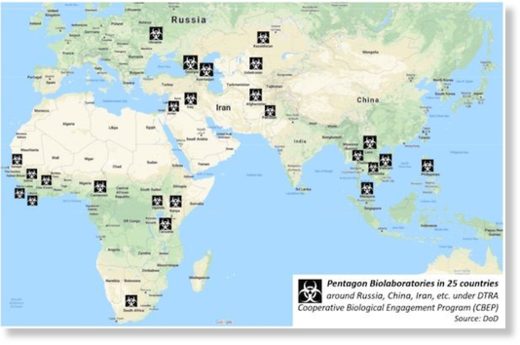
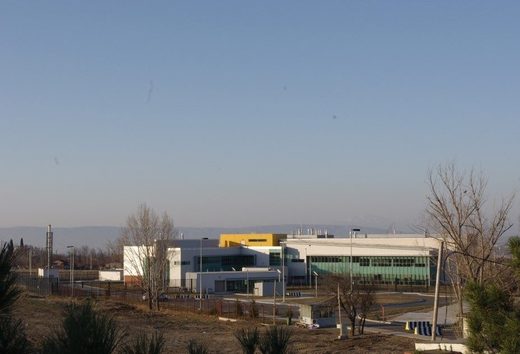
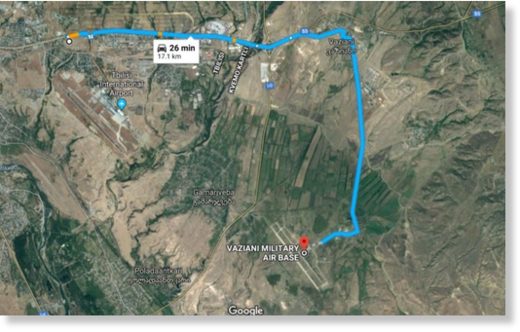
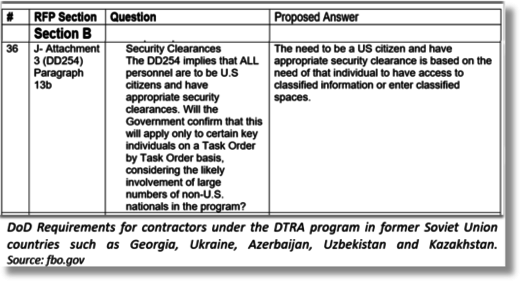
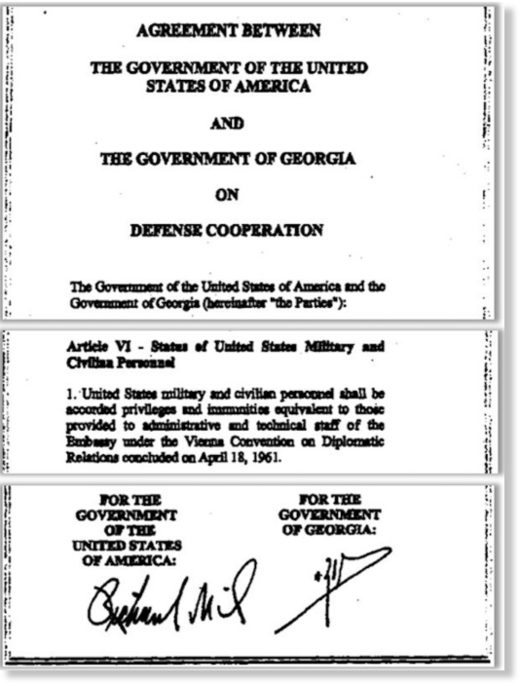
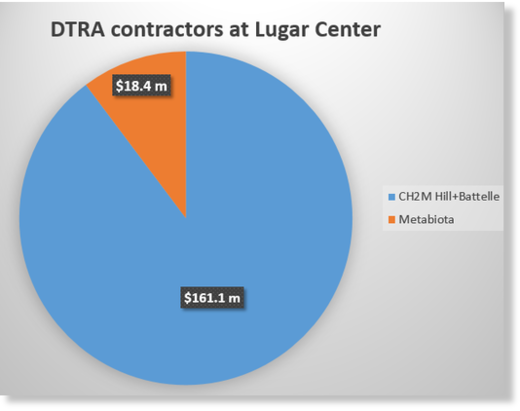

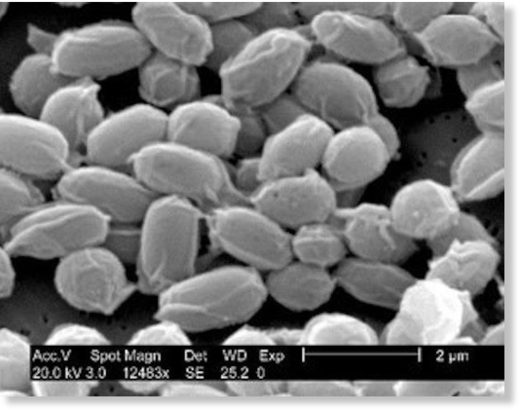


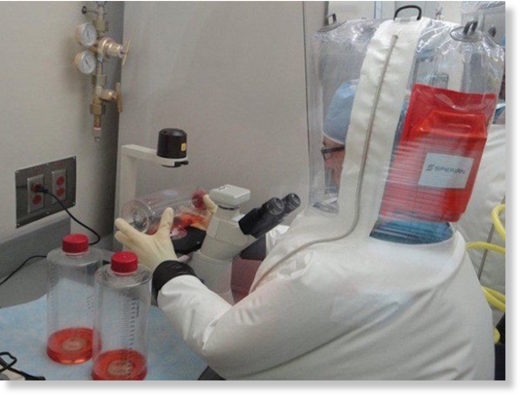
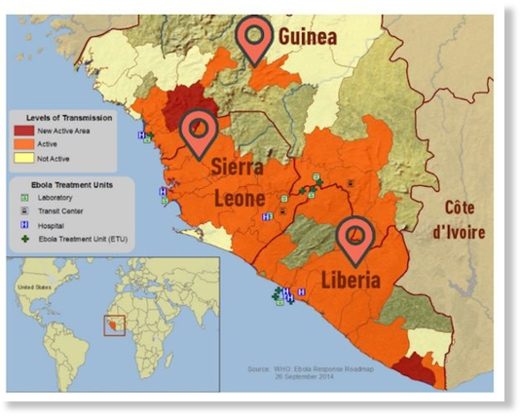
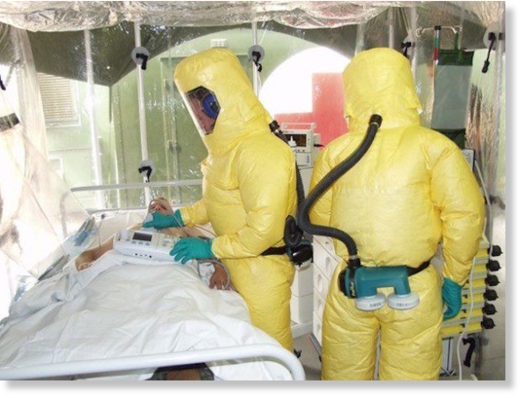
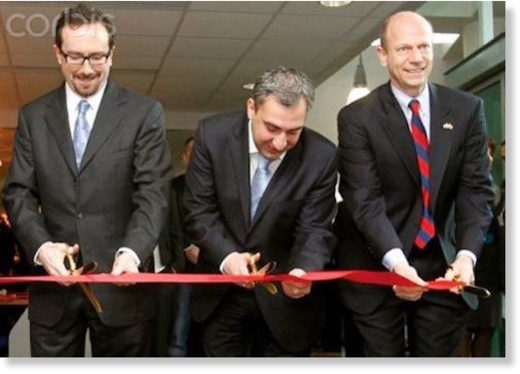
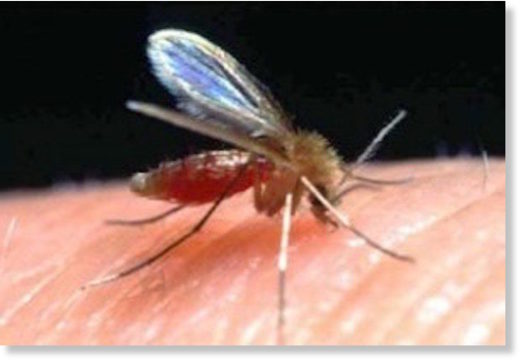
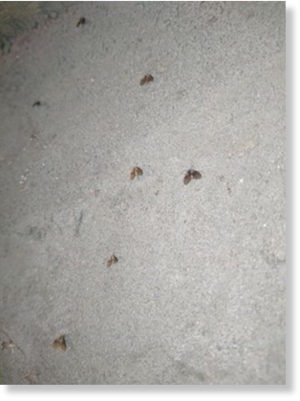
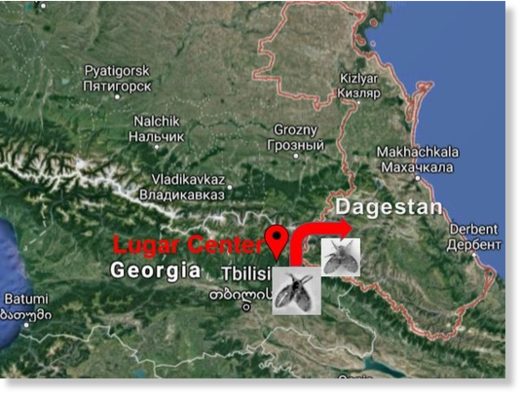


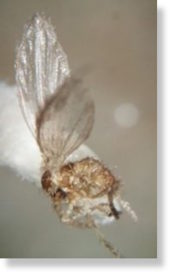
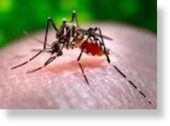
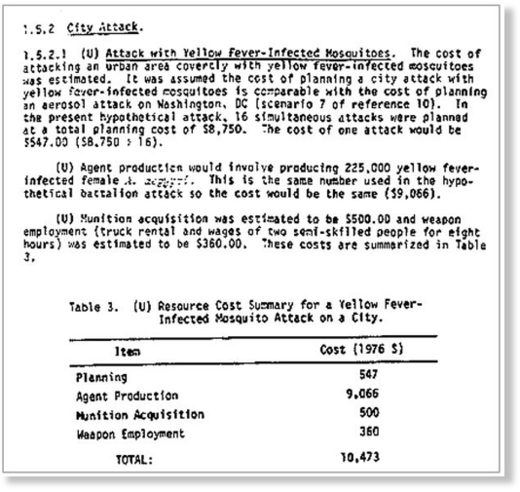
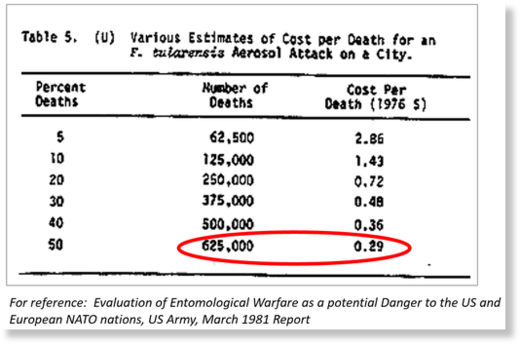
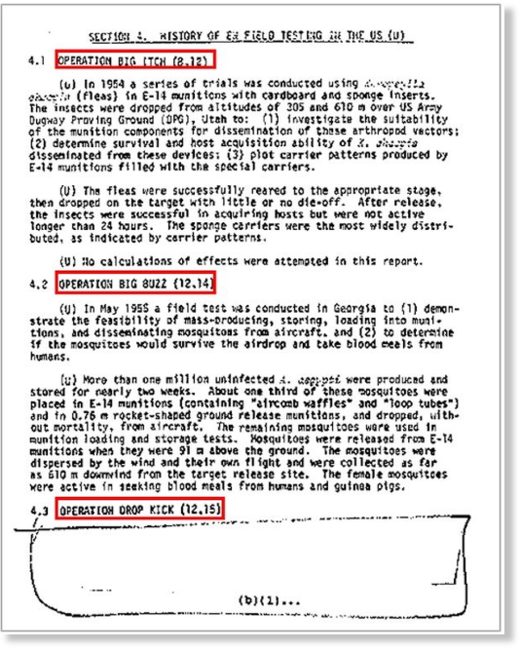
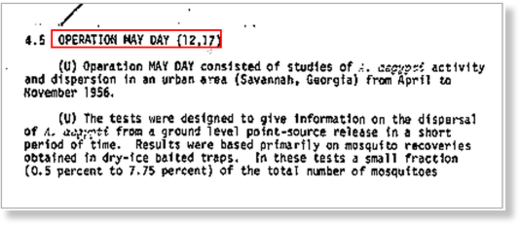
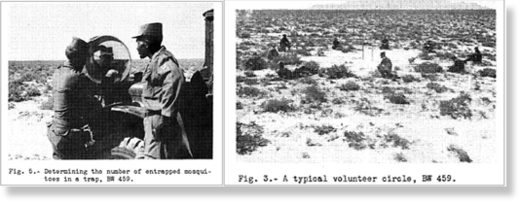
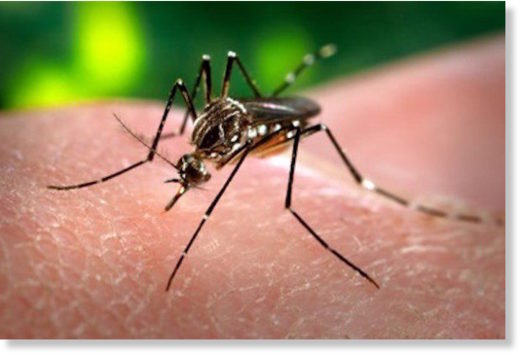
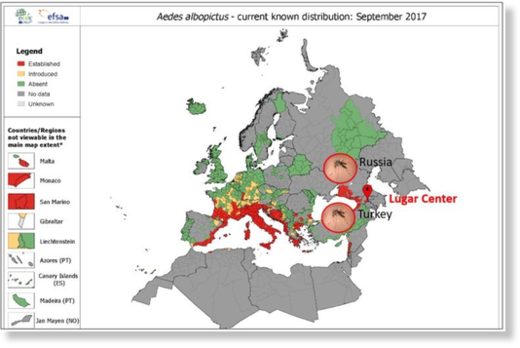
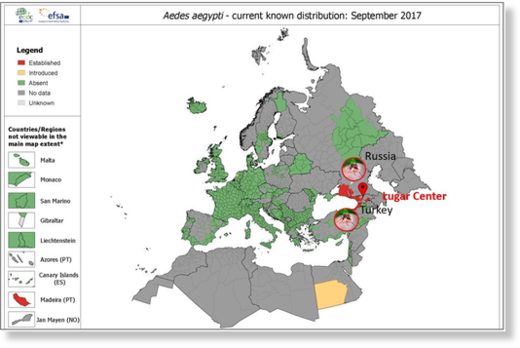
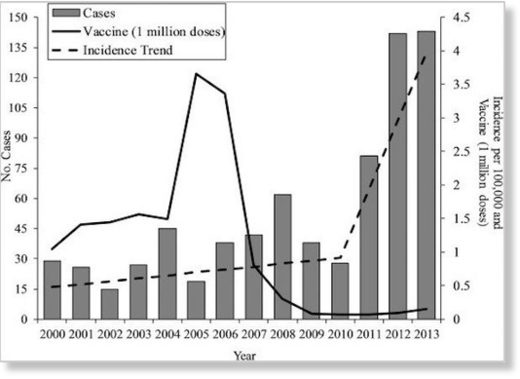
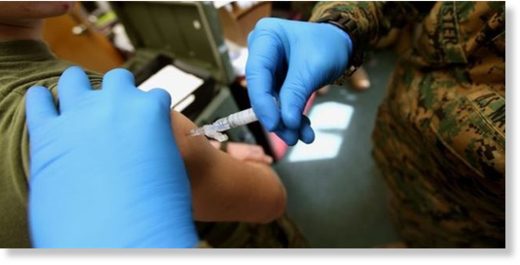

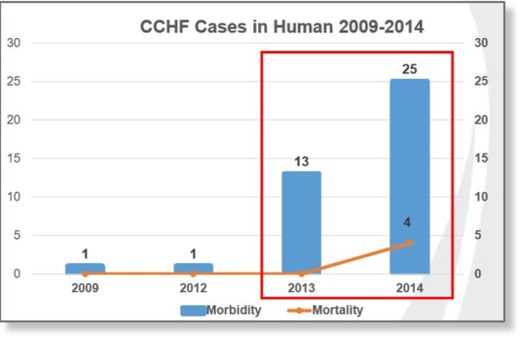
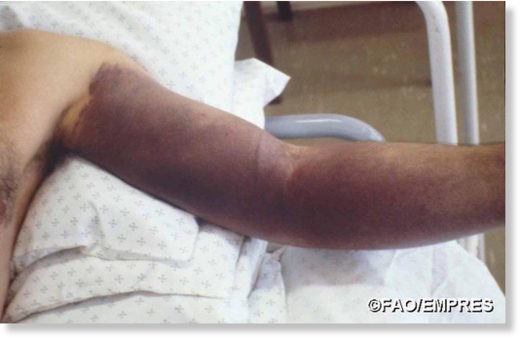
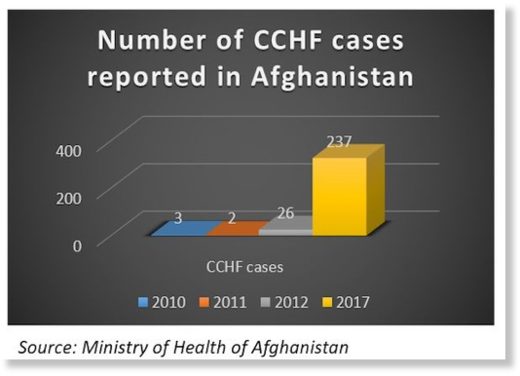
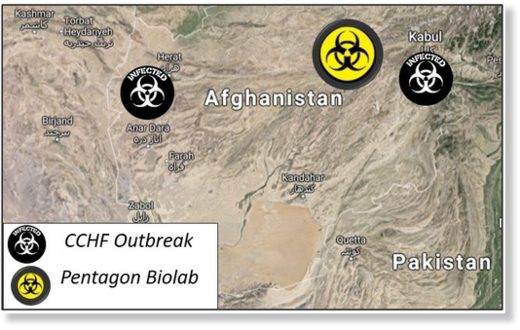

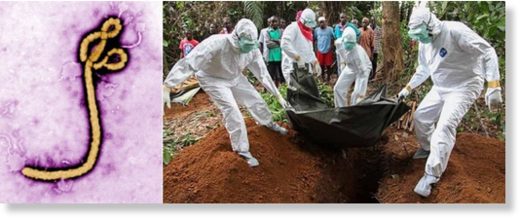
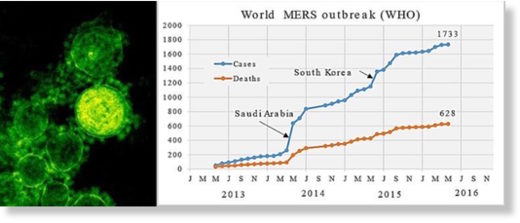
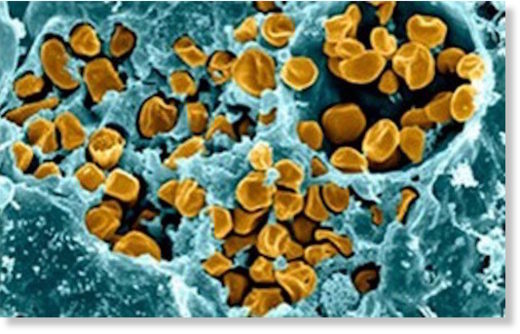
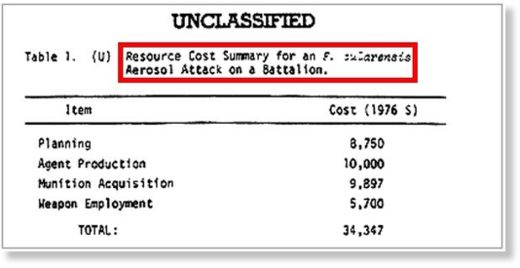

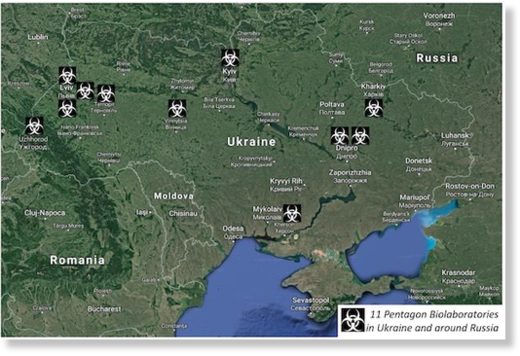
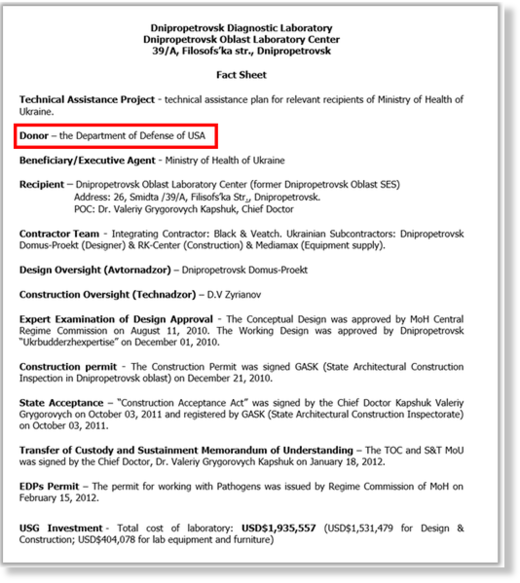
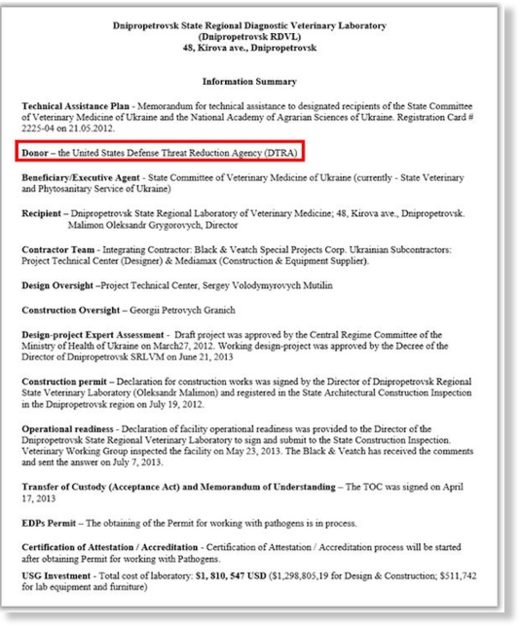









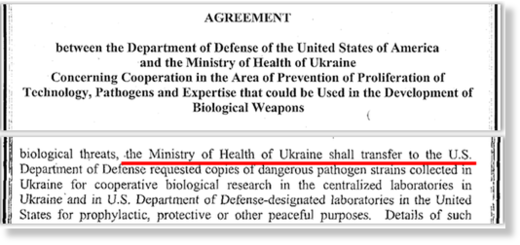
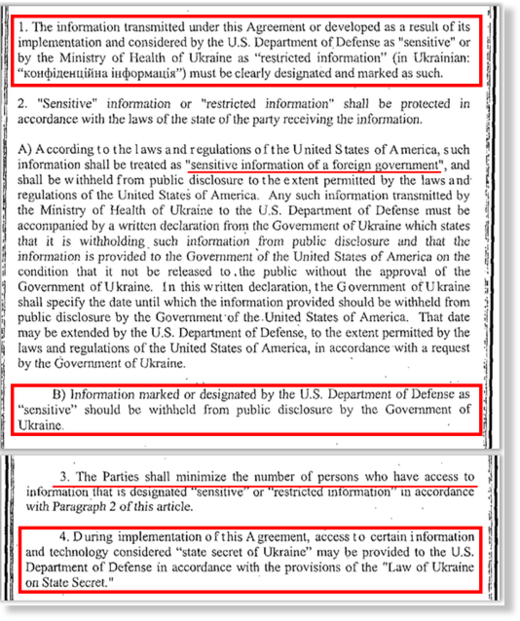
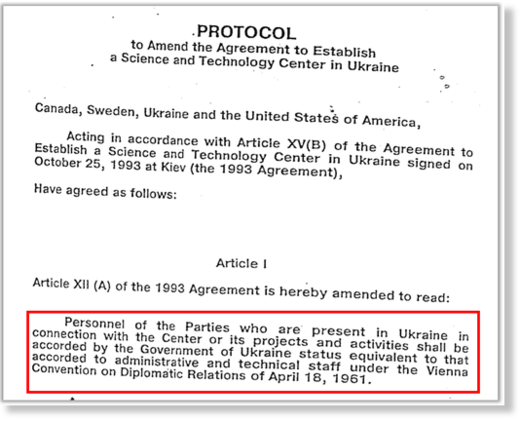
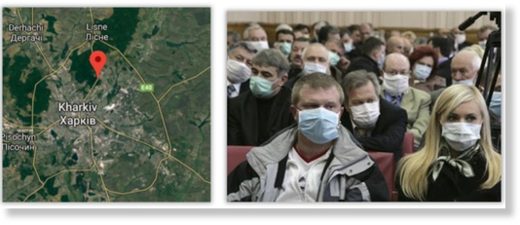
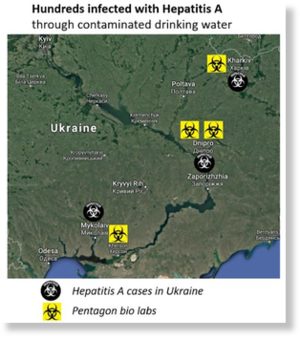
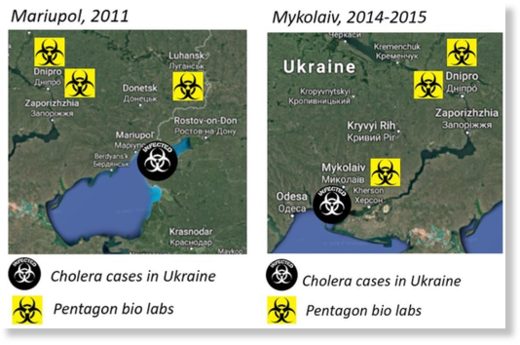
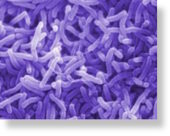
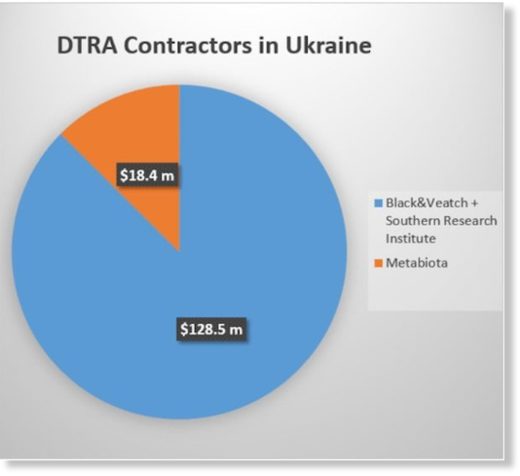
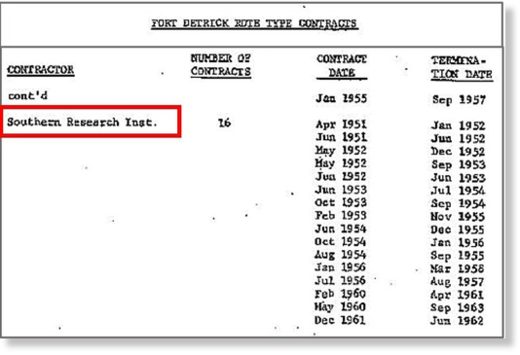
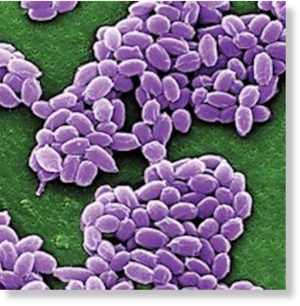
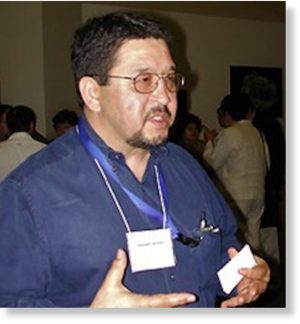



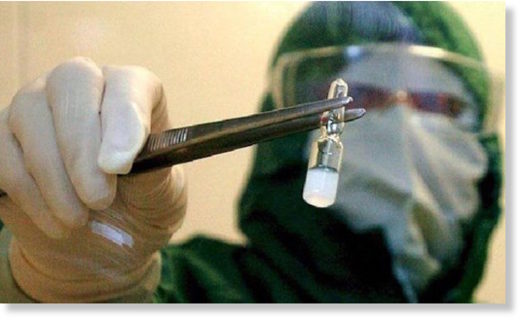
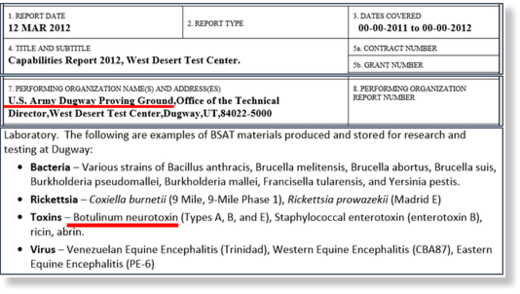
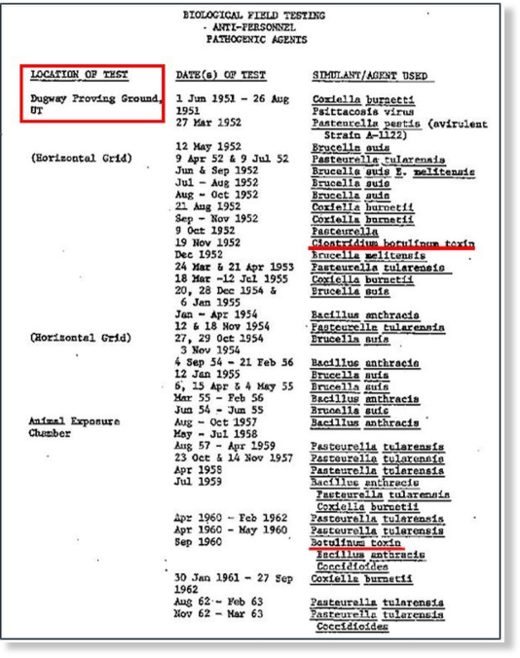


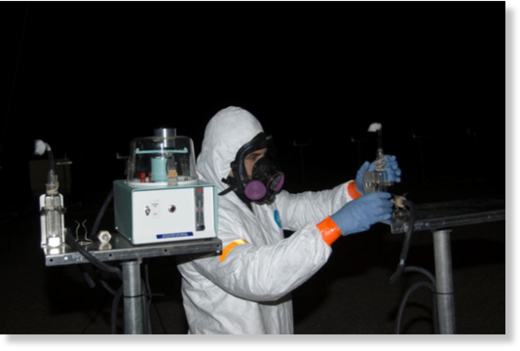
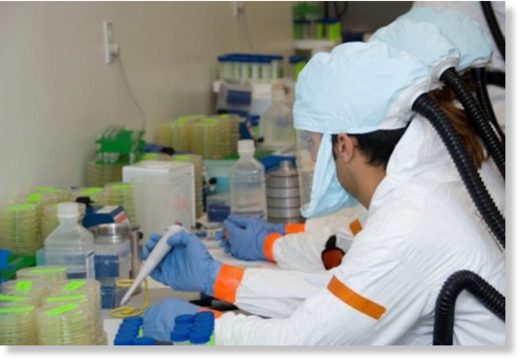

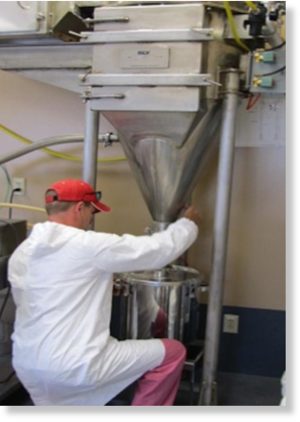
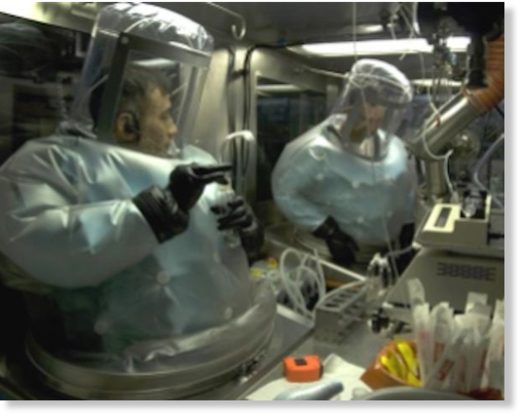


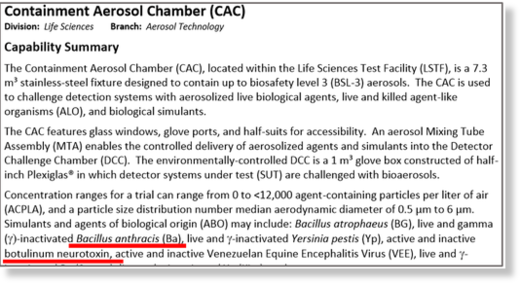
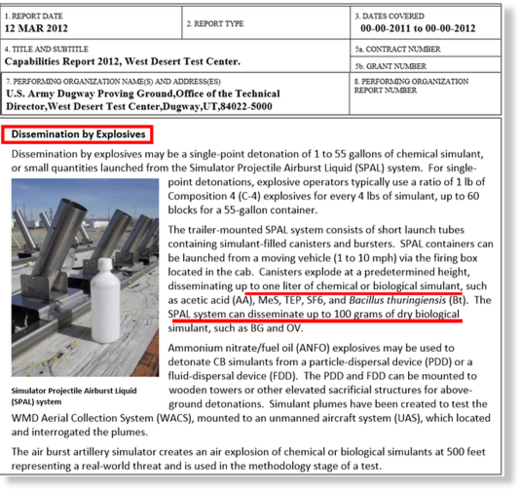
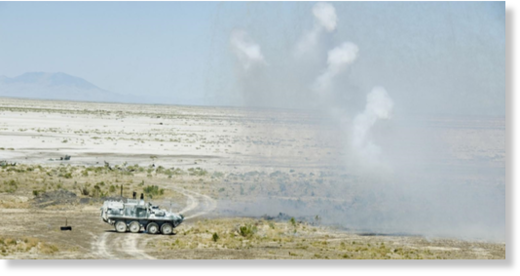

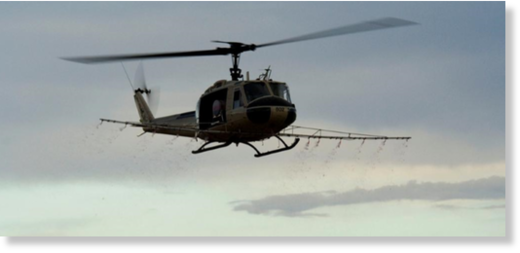




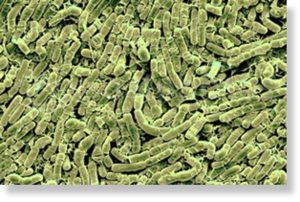



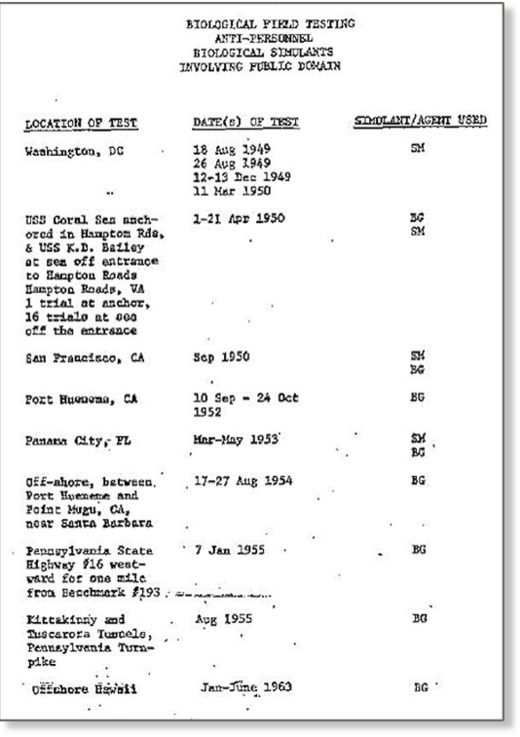
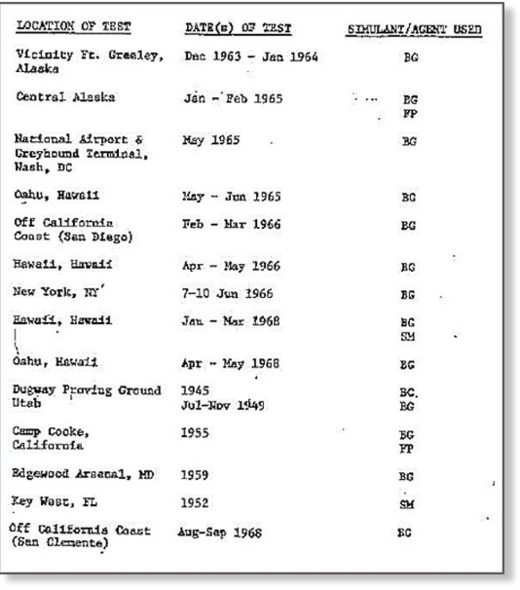
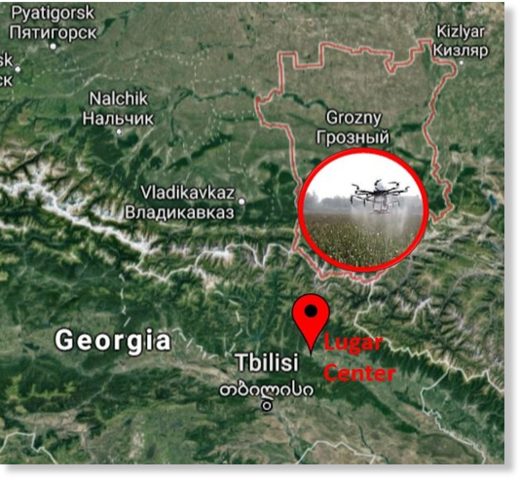








 Posted in
Posted in  Tags:
Tags: 
















